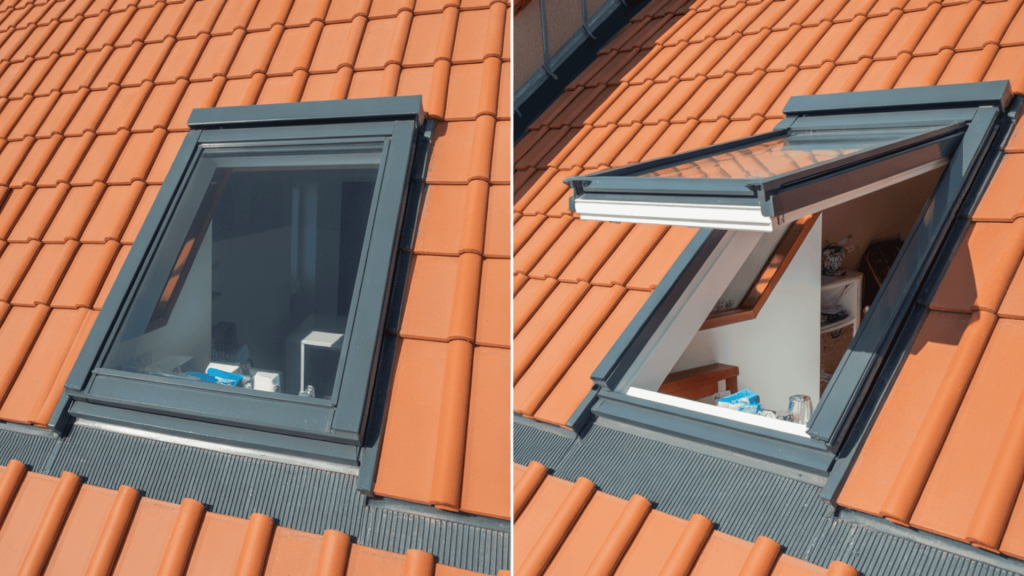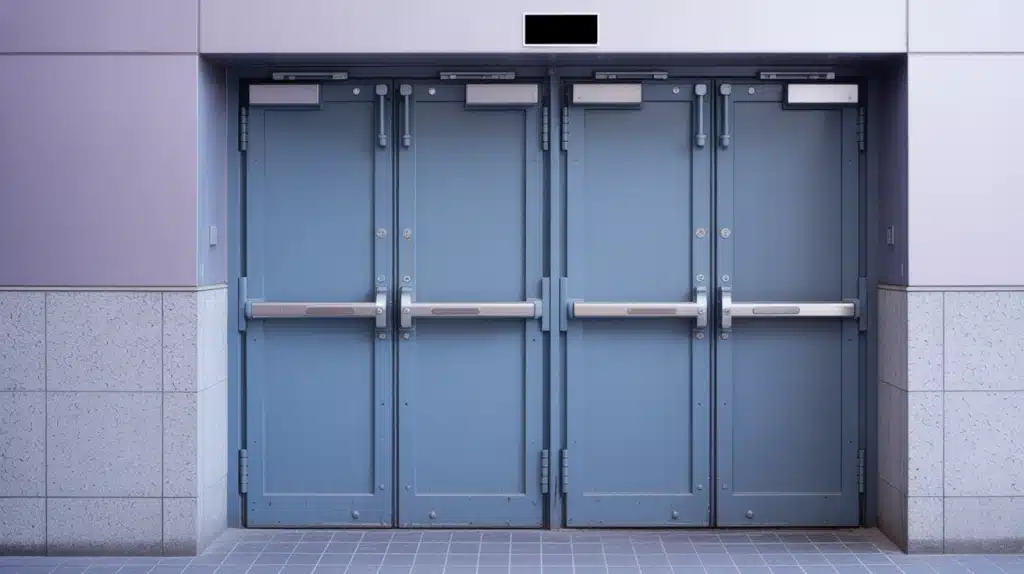Picture this: it’s 2 AM, and you smell smoke. Your heart races as you realize the hallway to your front door is blocked by flames. Where do you go?
This terrifying scenario happens to thousands of families every year. The difference between life and death often comes down to one thing: proper egress.
In this guide, you’ll learn precisely what egress means in simple terms, how to identify egress windows and doors in your home, and the specific size requirements that could save lives.
We’ll show you how to check if your current home meets safety codes and what to do if it doesn’t.
By the end, you’ll know how to protect your family with proper escape routes that actually work when seconds count.
What Does “Egress” Mean in Construction?
In construction, egress refers to the means of exit when you need to leave a building quickly.
When seconds count, you need a clear path to safety. Building inspectors take this seriously because lives depend on it. Imagine being trapped in a room with no way out during a fire or other emergency.
That’s precisely what proper egress prevents. Contractors and homeowners must adhere to strict guidelines regarding these exits. Even small renovations can affect egress requirements.
What You Need to Know:
- Simple Definition: Egress means a safe path to get out of any space in your home
- Types of Egress: Can be doors, windows, hallways, or stairs that lead outside
- Legal Requirement: Every room, especially bedrooms and basements, must have at least one proper exit
- Safety First: These exits must be easy to use, even in dark or stressful situations
- Size Matters: All egress points must be big enough for people to get through quickly
- Building Code Essential: No room can be legally used for sleeping without proper egress options
Egress Code Requirements
Egress code requirements are legal safety standards that outline the procedures for safely exiting buildings during emergencies.
These codes specify exact measurements for windows, doors, hallways, and stairs to ensure that everyone can escape quickly in the event of a disaster.
Major Codes:
- International Building Code (IBC) – Sets egress standards for commercial buildings, apartments, and multi-story structures.
- International Residential Code (IRC) – Governs egress requirements for single-family homes and small residential buildings.
- National Fire Protection Association (NFPA) – Provides fire safety guidelines that influence egress design and emergency exit protocols.
- Occupational Safety and Health Administration (OSHA) – Regulates workplace egress requirements to protect employees in the event of an emergency.
What Are Egress Windows?

Egress windows serve as emergency exits when doors aren’t available. These aren’t your typical house windows; they’re specially designed for escape situations.
Firefighters also use them to enter homes during rescues. Most regular windows are too small or positioned too high for a safe exit.
That’s why building codes mandate specific measurements for egress windows. Homeowners often install these when finishing basements or adding bedrooms.
The cost varies, but it’s a small price for family safety. Many insurance policies require egress windows in certain rooms. Without them, you might face legal issues when selling your home.
Core Requirements:
| Egress Window Requirements | Minimum Standards |
|---|---|
| Total Opening Area | 5.7 square feet |
| Opening Height | At least 24 inches |
| Opening Width | At least 20 inches |
| Distance from Floor | No more than 44 inches to the bottom of the opening |
| Basement Window Wells | Must provide a clear space for full window operation |
| Window Well Depth | Must allow the person to climb out safely |
Key Features:
- Large enough for adults to climb through safely
- Must open easily from the inside without tools or keys
- Required by law in all bedrooms and basement living areas
- Different rules apply depending on the room location and the ground level
What Are Egress Doors?
Egress doors are your primary means of escape in the event of an emergency. Unlike regular interior doors, these must meet strict safety standards.
Every home needs at least one egress door that opens directly to the outside. Some rooms may have their egress doors, especially ground-floor bedrooms.
The door hardware matters just as much as the door itself. Deadbolts that require a key from the inside can be deadly during emergencies.
Fire departments recommend practicing with these doors on a regular basis. Children should know how to operate all egress doors in their home.
During renovations, contractors must ensure egress doors remain accessible and functional.
Core Requirements:
| Egress Door Requirements | Standards |
|---|---|
| Interior Operation | Must open from the inside without keys or tools |
| Door Width | Minimum 32 inches clear opening |
| Door Height | Minimum 80 inches tall |
| Hardware Type | Single-motion release (no double-keyed deadbolts) |
| Swing Direction | Usually outward to prevent blocking |
| Direct Access | Must lead directly outside, not to another room |
| Path Clearance | The area around the door must stay obstacle-free |
Key Features:
- The primary exit route from any building or room
- The most common egress doors in homes are the front and back doors
- Must comply with local building codes for safety
Alternative Egress Paths
Beyond windows and doors, your home has other critical escape routes. These pathways connect your rooms to the main exits.
Poor planning in these areas can turn a simple escape into a deadly trap. Many homeowners overlook these paths when decorating or storing items.
Clutter in hallways becomes dangerous during emergencies when visibility is low. Stairways require special attention, as falls can occur during panicked exits.
Even small design choices, such as carpet type, can affect safety. Building inspectors carefully inspect these paths during home inspections.
Insurance adjusters also evaluate these routes when assessing claims for fire damage.
Core Requirements:
| Egress Path Requirements | Standards |
|---|---|
| Hallway Width | Minimum 36 inches clear width |
| Stair Width | Minimum 36 inches between handrails |
| Path Clearance | Must stay free of furniture and storage |
| Direct Route | Must lead straight to the exit doors |
| Emergency Lighting | Required in commercial buildings only |
| Exit Signs | Required in commercial and multi-unit buildings |
| Surface Materials | Non-slip flooring recommended |
Key Components:
- Connect individual rooms to the main exit doors
- Must remain clear and accessible at all times
- Critical for multi-story homes and large floor plans
How to Know If Your Home Is Code-Compliant
Checking your home’s egress compliance starts with a simple measuring tape and ends with peace of mind.
Start by measuring all bedroom and basement windows to ensure they meet the 5.7 square foot opening requirement. Test each window to confirm it opens fully and easily from inside.
Check that window sills aren’t too high; they should be no more than 44 inches from the floor. For doors, verify that they open without a key from the inside and provide at least 32 inches of clear width.
Walk through your hallways and stairs to identify any storage or furniture that blocks escape paths.
If measurements seem close to minimum requirements or you’re unsure about specific codes, contact a licensed building inspector or contractor for a professional assessment.
They can identify problems you might miss and suggest affordable solutions to bring your home up to code.
Final Thoughts
Egress isn’t just another construction term; it’s your family’s insurance policy against the unthinkable.
Every properly sized window, every correctly installed door, and every clear hallway could mean the difference between tragedy and safety.
Don’t wait for an emergency to test your escape routes. Walk through your home today and check each bedroom and basement for proper exits.
Measure those windows, test those doors, and clear those pathways. If something doesn’t meet the code, fix it now while you have the opportunity.
Remember, building inspectors and contractors are there to help, not hassle you. Your family’s safety is worth every dollar spent on proper egress.
Contact a licensed contractor or building inspector this week to assess your home’s egress compliance, because peace of mind starts with proper preparation.
Frequently Asked Questions
What Is an Example of Egress?
A bedroom window large enough to climb through, your front door, or basement stairs leading to an exit door.
What Is the Difference Between Exit and Egress?
Exit refers to the specific door or opening you use to leave, while egress includes the entire escape path from the room to the outside.
What Is the Difference Between Ingress and Egress?
Ingress refers to entering a building (going in), while egress refers to leaving a building (getting out).










